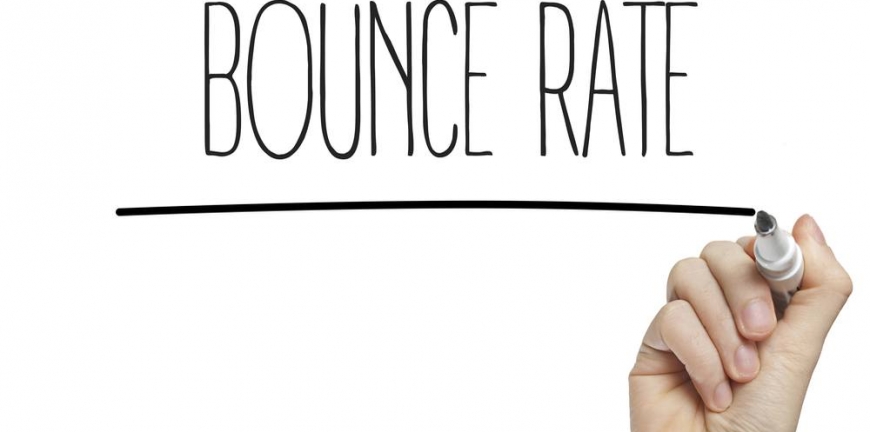
Does A High Bounce Rate Kill SEO?
A bounce rate is calculated as a percentage of single page visits on a site. It is basically the number of visitors who leave a landing page without any further browsing on the site. However, the bounce rate is calculated by dividing the number of bounces in a given time period by the total number of entrances during that same time. The average bounce rate runs between 45 and 55 percent. A bounce rate below 45 is considered excellent and above 70 is considered terribly disappointing.
Why Bounce Rate Matters
Google tracks and monitors bounce rates and traffic on sites because their goal is to provide the top 10 results for each interpretation of a keyword search. If a site is displayed on the first page of the search results and a high percentage of the traffic leaves the site immediately without navigating through it at all, then Google will likely remove it from the first page results. So ultimately, a high bounce rate can kill your SEO strategy.
The Good, The Bad, And The Ugly
Bounce rates almost always have a negative connotation associated with them. However, they are not always bad. A bounce rate on a page with a call-to-action can be a good thing. For instance, a high bounce rate on a “contact us” page can convey that users are acting on the CTA. Unfortunately, artificial intelligence cannot differentiate between a positive connotation and a negative. Additionally, optimizing for the bounce rate does not always improve the quality of the page, which should be the main goal.
Not A Metric
Google does not use a page’s bounce rate as a formal metric for ranking on SERPs. Bounce rates can’t accurately measure engagement, so they are not reliable. Google Analytics can be easily manipulated by unscrupulous characters, which means that there is also no need to use this data. The fact is that Google uses its own algorithm to determine bounce rates. The formula at the beginning of this dialogue is what the rest of us use because it’s the closest reliable formula. The Google algorithm does employ tactics to try to decipher if a high bounce rate has a negative connotation before taking any action.
Google’s Other Factors
Google actually looks at long clicks and short clicks in relation to the bounce rate. Long clicks are when a user clicks on a page and stays for a little while. A short click occurs when a user clicks on a sight and then immediately returns to the results page. Google optimizes for longer clicks because that is the best sign of user satisfaction. For SEO purposes, long clicks mean the same thing. The conclusion is that bounce rate still matters.
Bounce Rate And SEO
No matter how you look at it, bounce rate affects SEO. Sometimes it’s a direct effect and sometimes it’s indirect. For instance, it is unnecessary to optimize for the bounce rate if your page has a good long click percentage and a long dwell time.
A high bounce rate can be an indicator of other weaknesses in your SEO strategy. If your site or certain pages on your site are not mobile friendly or they have a slow load time, your bounce rate will be higher. A mismatch between keywords and the displayed content can also show a higher bounce rate. Of course, low-quality sites will also have a higher bounce rate. The main idea is that optimizing for a lower bounce rate can be like treating the symptom instead of the problem. If you don’t fix the problem and strengthen the weaknesses, the rankings will continue to suffer.



